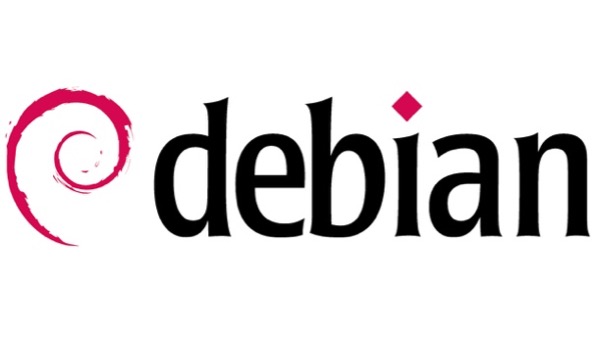Four of the Most-Used Linux Distributions

Linux is an open-source operating system that powers an extensive variety of devices. Versions of Linux power personal computers, mobile devices (the Android operating system is a heavily modified version of Linux), embedded computers, servers (Linux powers more than 96% of the world’s top million web servers), mainframes, and it powers each of the world’s 500 fastest supercomputers.
The reason for the wide variety of use cases lies in the inherent flexibility of the Linux operating system. As Linux is open source, it can be tailored and modified to meet just about any criteria imaginable. This is reflected in the sheer number of different Linux-based operating systems – called Linux distributions. At the time of writing, nearly one thousand different Linux distributions exist.
There are a few major families of distributions that form the foundation of nearly every single Linux distribution. The major difference between these families is the package management system that they are based on. Below are some of the most used Linux distributions.
Debian

Debian – first released in 1993 – is one of the oldest Linux distributions that is still being actively developed. Debian and distributions based on it use the .deb package format. Debian is maintained and updated by more than 1,000 volunteer developers, and its software repositories contain close to 50,000 binary packages. Debian has earned the reputation of being one of the best-tested and most bug-free distributions available today, but its development cycle is comparatively slow, with stable releases publishing only every 2-3 years.
According to DistroWatch – which tracks and provides info on Linux distributions – there are 119 active Debian derivatives, the most notable being Ubuntu.
Ubuntu

Ubuntu, launched by UK-based company Canonical in 2004, is one of the most popular Linux distributions available today. It is packaged in three different editions: Desktop, Server, and Core for IoT devices. Desktop and Server are free with community and professional support.
Ubuntu has a fixed release cycle, with releases every six months, with free support for nine months. Every fourth release is a long-term support (LTS) release that receives support for five years.
Ubuntu is generally understood as a very simple operating system to install and use, and it is oftentimes the distribution chosen by first-time Linux users. Like iOS and Windows, Ubuntu comes packaged with a wide range of software including LibreOffice, Firefox, and Thunderbird.
Fedora/Red Hat Linux

Fedora Linux is developed by the community-supported Fedora Project and owned by Red Hat. Fedora is a direct successor to Red Hat Linux, which was released in 1995. In 1997, Red Hat released the RPM package management system, which utilizes the .rpm file type.
In 2003, Red Hat split into Red Hat Enterprise Linux – a stable, standardized commercial offering – and Fedora – a community-oriented open-source distribution. To this day, Fedora serves as the upstream source for Red Hat Enterprise Linux, with Fedora serving as a quasi-testbed for the enterprise product.
Fedora Linux comes in five different versions based on the end use case:
- Fedora Workstation – Official desktop edition of Fedora Linux
- Fedora Server – Official server edition of Fedora Linux
- Fedora IoT – Official IoT version of Fedora Linux; supporting arm64, arm32, and x86_64 architectures
- Fedora CoreOS – Automatically updating, minimal, monolithic, container-focused operating system (Essentially, CoreOS is a bare-bones, lightweight version of Fedora Linux.)
- Silverblue – Immutable version of Fedora Workstation; every installation is identical to every other installation of the same version
Red Hat Enterprise Linux

Like Fedora, Red Hat Enterprise Linux utilizes the .rpm file type. Also like Fedora, Red Hat Enterprise Linux offers several different versions (commercial, paid versions) based on the end use case:
- Red Hat Enterprise Linux Workstation – Standard desktop version
- Red Hat Enterprise Linux Server – Server version
- Red Hat Enterprise Linux for Virtual Datacenters – Version supporting virtualized environments like Openshift Virtualization, Red Hat Virtualization, VMware, and Microsoft HyperV
- Red Hat Enterprise Linux for SAP Solutions – SAP-specific offering, tailored to the needs of SAP workloads such as S/4HANA and SAP HANA platform
Sealevel’s Comprehensive Software Solutions for Linux
Sealevel’s hardware is matched only by our software solutions, engineered in-house by our team of developers. Installation and operation of devices is simplified through the use of our operating system-specific software. Sealevel software for Linux includes:
- SeaMAC for Linux supports synchronous serial adapters
- SeaMAX for Linux supports SeaI/O, eI/O, and SeaDAC data acquisition modules
- SeaIO for Linux supports board-based and legacy USB digital I/o devices
With nearly a thousand different offerings, the big-picture view of Linux distributions can be overwhelming. It becomes much easier to navigate by viewing all the distributions as a tree of systems. At the very top level of the tree, there are several distinct major families of Linux. Inside each tree, it becomes possible to narrow down further a decision based on the end-use case of the distribution.
Categories:
